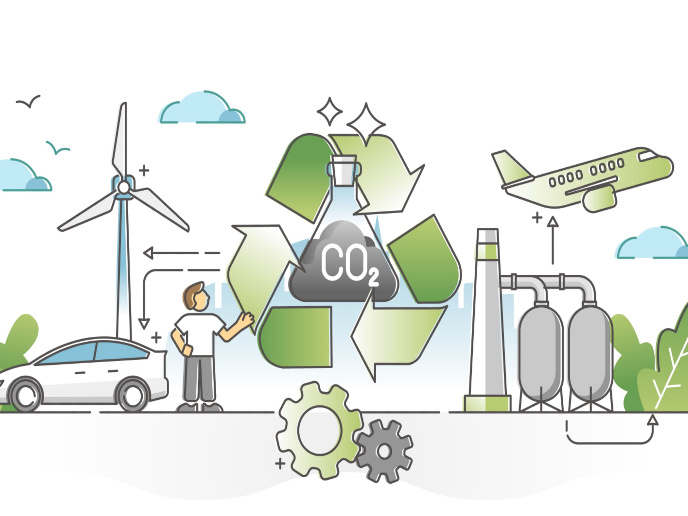Green methanol to the transport industry’s rescue
If there is one thing there is no shortage of on our planet, it is CO2 pollution, with over 36 billion tonnes produced in 2021 alone. Today, CO2 accounts for 60 % of the greenhouse gas (GHG) emissions that contribute to global warming. However, it also has great potential as a raw material for the production of renewable fuels. The EU-funded LAURELIN project is working on turning CO2 pollution from fossil fuels into low-carbon, green fuel. Since its launch in May 2021, LAURELIN has been developing innovative processes to convert CO2 into renewable methanol. Green methanol has the potential to play a major role in decarbonising the transport sector, in addition to combating the problem of nitrogen oxide (NOx) and sulfur oxide (SOx) pollution. “It can cut CO2 emissions by up to 95%, reduce NOx emissions by up to 80%, and completely eliminate SOx and particulate matter emissions,” states Materials Research Department Head Adolfo Benedito Borrás of LAURELIN project coordinator AIMPLAS, Spain, in a news item posted on the project website. “It is a promising technology that can play an important role in making Europe the first climate-neutral continent.” The project team’s focus has been on making green methanol production from CO2 hydrogenation easier and more energy- and cost-efficient. Currently, the process of hydrogenating CO2 into methanol is significantly constrained by high energy consumption and production costs. At ordinary temperatures, CO2 is rather unreactive. For hydrogenation to take place, it requires temperatures of around 250 °C and the use of a catalyst to speed up the chemical reaction between hydrogen and CO2.
Three technologies for greener fuel
To overcome the limitations preventing the full exploitation of methanol production, the LAURELIN researchers are exploring three promising technologies: microwave heating, non-thermal plasma induction and magnetic induction. Construction of the corresponding three reactors for CO2 conversion to methanol is currently being finalised. In the next few weeks, the team will also be fine-tuning the reactors, for example by making them operable at higher pressures. The performance of each catalyst system will be assessed against conventional hydrogenation methods using heat. If the project’s energy efficiency and cost reduction targets are met, this new generation of catalyst systems could end up slashing transport carbon emissions. “Reducing the e-methanol production costs would lead to an increase in the opportunities to use it as fuel. This would directly benefits [sic] society thanks to the reduction in GHG emissions and costs, creating further jobs and wealth,” explains Prof. Teruoki Tago of LAURELIN project partner Tokyo Institute of Technology, Japan. As a LAURELIN (Selective CO2 conversion to renewable methanol through innovative heterogeneous catalyst systems optimized for advanced hydrogenation technologies (microwave, plasma and magnetic induction)) video so aptly puts it, the new technologies will essentially be “making green fuel out of thin air.” For more information, please see: LAURELIN project website
Keywords
LAURELIN, CO2, greenhouse gas, methanol, emissions, carbon, hydrogenation, catalyst, nitrogen oxide, sulfur oxide



